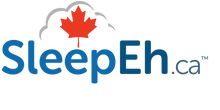Hypersomnia describes a state of excessive daytime sleepiness (EDS) that can adversely affect a person’s ability to function and perform daily tasks. It can be caused by a number of factors, including inadequate or insufficient sleep, certain physical and mental conditions, and some medications.
The characteristics of hypersomnia differ from person to person depending on the underlying cause, as well as the patient’s age and lifestyle. Under the guidance of a healthcare professional, the symptoms of hypersomnia can be managed through a variety of approaches.
Primary hypersomnia and secondary hypersomnia
Primary hypersomnia describes daytime sleepiness that occurs on its own, with no other medical problems at its root. The only symptom of primary hypersomnia is excessive fatigue. Secondary hypersomnia arises as a result of an external factor or underlying cause, such as:
- Certain medical conditions (including multiple sclerosis, encephalitis, and epilepsy)
- Some sleep disorders (obstructive sleep apnea and insomnia, for example)
- Drug or alcohol abuse
- Certain mental health conditions (such as depression and bipolar disorder)
According to the National Institute of Neurological Disorders and Stroke, physical problems — such as head trauma, tumours, and injury to the central nervous system — can also lead to hypersomnia.
Causes of hypersomnia
In most cases of idiopathic hypersomnia (IH), the cause remains unknown. Scientists have explored the roles that neurotransmitters and cerebrospinal fluid may play in the development of IH. With a family history of the condition present in up to 39% of people with idiopathic hypersomnia, a genetic link is possible. Researchers are also investigating certain genes involved with circadian rhythm that may be atypical in people with IH.
Secondary hypersomnia can arise as a result of conditions that cause tiredness or insufficient sleep (such as insomnia). Some medications can also cause hypersomnia, and frequent drug and alcohol use may lead to excessive sleepiness during the day.
Central disorders of hypersomnolence
Hypersomnolence — the inability to stay awake and alert during typical waking times — is not considered a disorder in itself, but rather a symptom of another issue. In central disorders of hypersomnolence, severe daytime sleepiness is present and cannot be attributed to another sleep disorder. Idiopathic hypersomnia, narcolepsy type 1, Narcolepsy type 2, and Kleine-Levin syndrome are considered central disorders of hypersomnolence.
Idiopathic hypersomnia (IH) is a chronic neurological disorder. Individuals with this condition sleep for normal or extended periods of time, but still feel extremely tired during the day. “Sleep drunkenness” — where a person switches between various stages of wakefulness for up to four hours after initially awakening — can be another indicator of idiopathic hypersomnia. Symptoms of idiopathic hypersomnia are not usually alleviated by daytime naps and the sleep-to-wake transition can be more difficult and prolonged.
Type 1 narcolepsy is caused by a lack of orexin, a neuropeptide that plays a role in regulating the sleep-wake cycle. In addition to hypersomnolence, other symptoms of type 1 narcolepsy include cataplexy (sudden muscle weakness), sleep paralysis, and hallucinations. Type 2 narcolepsy can feature many of the same symptoms as type 1 narcolepsy, but symptoms are sometimes less severe in those with type 1 narcolepsy. Type 2 narcolepsy is not caused by insufficient levels of orexin and does not include cataplexy.
People with a rare disorder known as Kleine-Levin syndrome have periods of excessive sleepiness that last days to weeks, punctuated by months-long spells with no episodes of tiredness. These spells of extreme sleepiness occur alongside behavioural and mental disturbances. Kleine-Levin syndrome predominantly affects young males and episodes tend to become less frequent over time.
Diagnosing hypersomnia
If a patient is experiencing excessive daytime sleepiness, their doctor will seek to determine what type of hypersomnia (primary or secondary) is present. The doctor will ask questions about the patient’s medical history, sleep history, symptoms, and current medications. The patient may be asked to record their sleep-and-wake patterns in a sleep diary or questionnaire. An actigraphy sensor — a small device worn on the wrist like a watch — might be recommended to track disturbances to the patient’s sleep-wake cycle over time.
Where required, a sleep specialist may order an overnight sleep study. Known as polysomnography, this involves tests that measure breathing patterns, brain waves, muscle movements, and heart rhythms during each stage of sleep. The tests are conducted in hospitals, sleep study centres, or other designated medical sites under the supervision of a sleep specialist.
Multiple sleep latency tests might also be performed. These daytime sleepiness tests examine the patient’s tendency to fall asleep during five 20-minute nap trials planned two hours apart. Brain activity is monitored and recorded, including the number of naps the patient had that contained REM sleep.
Treatment for hypersomnia
The best treatment for hypersomnia will depend on what is causing the excessive daytime sleepiness, as well as the patient’s medical and sleep history. If hypersomnia is the result of an underlying issue (such as obstructive sleep apnea), it is often helpful to treat the primary concern first.
Practising good sleep hygiene and making healthy lifestyle changes — such as avoiding caffeine or alcohol before bedtime, going to bed at a regular time, and maintaining a comfortable sleep environment — may help to manage the symptoms of hypersomnia.
Medications may be prescribed by a doctor to treat different types of hypersomnias. Particularly in cases where symptoms are severe or treatment-resistant, medications might be used in combination. Education and support groups are also available to help people with hypersomnia, and cognitive behavioural therapy (CBT) can be beneficial in learning skills and techniques for coping with symptoms.

